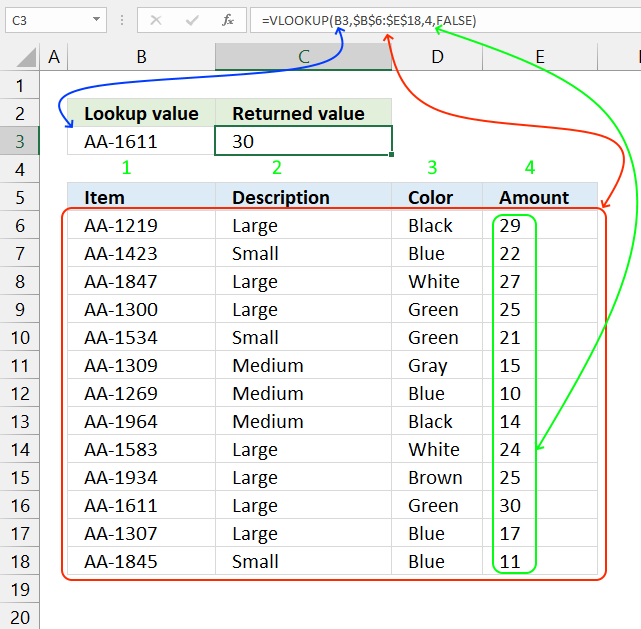

- #How to use vlookup in excel for long data sets how to
- #How to use vlookup in excel for long data sets full
Now we know we have created an Address in the previous step which was within column 1, this is also the same as column A. In our example, this address at this point in the large formula is set to $A$2. Once we know we are starting here we can always move the cells along accordingly. We use 1 because for this we are only interested in starting on the first column of data. In this case, the row number is generated from the previous function, =MATCH() and the value of E3 in the example above is 1. The =ADDRESS() function takes a Row Number and a Column Number and turns that into an Address. The next bit we need to look at is turning the row & column numbers into an ‘Address’ which Excel can understand. Now we need to translate this into something that a VLOOKUP formula can use.

This has now found the first occurrence of this information within the column of data. Within the range of data Prices!$A$1:$A$100.Find the contents of B1, which is ‘Fruit’ in our example.

Looking back at our example, this translates into the formula For example, you might use the MATCH function to provide a value for the row_num argument of the INDEX function. Use MATCH instead of one of the LOOKUP functions when you need the position of an item in a range instead of the item itself. Returns the number 2, because 25 is the second item in the range. For example, if the range A1:A3 contains the values 5, 25, and 38, then the formula The MATCH function searches for a specified item in a range of cells, and then returns the relative position of that item in the range. To remind ourselves of what the MATCH() function is, here is the official description from Microsoft To find the first occurrence of ‘something’ within a range of data then we use the =MATCH() function. There are a few different formulas included to find the first occurrence of data within a column which are outlined below. Once this has been identified, then we can use the standard =VLOOKUP() function on this sub-table to find the data we would like. The individual steps within the above formula can be broken down into much smaller and easier to understand steps as can be seen below
#How to use vlookup in excel for long data sets how to
Most importantly, you will be able to understand how to perform the equivalent of a VLOOKUP inside a VLOOKUP. You may be a little confused with the above, so this post will explain exactly what each part of this means and why it is contained within the rather large and complex formula above. Looking for the quick answer to this complex formula? Then here is the answer To keep things easier to understand, these two pieces of data are kept on two separate sheets within the Excel worksheet. This is the data that we will be working with so you can clearly see how this technique can be implemented. Let’s assume that we have a large list of products which are associated with multiple different categories as can be seen below Throughout this blog post we’ll look at what each of these mean and how they can all be used in conjunction to perform a function what is essentially equivalent to a VLOOKUP within a VLOOKUP.īefore we jump into how to solve the problem of performing a VLOOKUP within a VLOOKUP, here is the data that we will be working with. The solution to this is quite a complex one and one that involves many different Excel formulas including But we aren’t going to look at why this is so great here, we are going to look at the main limitation and most importantly how to get around this with more clever magical Excel formulas. This is such a powerful function that can be used to speed up work in so many different ways. What this means in basic terms is “find me a specific cell within a table of data where a certain criteria is met”. =VLOOKUP(lookup_value,table_array,col_index_num,range_lookup) Let’s remind ourselves what the VLOOKUP function actually does The reason this isn’t possible is due to the way the VLOOKUP function works. One of the major challenges within Excel is trying to use a VLOOKUP function within a VLOOKUP function.
#How to use vlookup in excel for long data sets full
Within our daily work we use Excel an awful lot, so naturally we like to use Excel to its full potential using lots of exciting formulas.


 0 kommentar(er)
0 kommentar(er)
